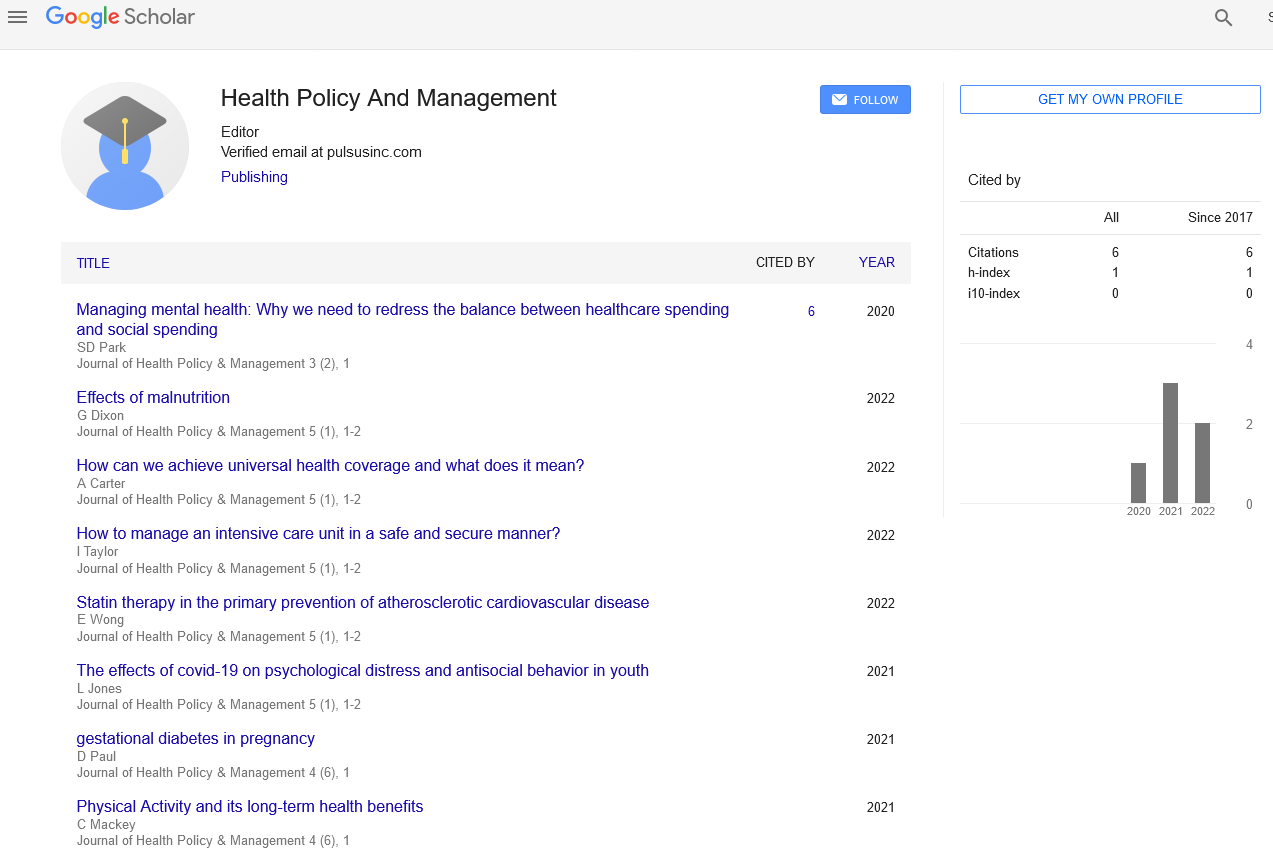Public awareness on HIV/AIDS
Received: 01-Oct-2021 Accepted Date: Oct 15, 2021; Published: 22-Oct-2021
Citation: Bains J. Public awareness on HIV/AIDS. J Health Pol Manage. 2021;4(5):4.
This open-access article is distributed under the terms of the Creative Commons Attribution Non-Commercial License (CC BY-NC) (http://creativecommons.org/licenses/by-nc/4.0/), which permits reuse, distribution and reproduction of the article, provided that the original work is properly cited and the reuse is restricted to noncommercial purposes. For commercial reuse, contact reprints@pulsus.com
Description
The occurrence of HIV is a global danger to public health. Although there's no therapy for HIV, health education is taken into consideration as the best preventive measure. HIV stands for Human Immunodeficiency Virus, and it is the virus that causes AIDS. Unlike most viruses, like the common cold or flu, our immune systems cannot combat HIV. Once a patient is infected, they carry the virus for life.
Human: This precise shape of the virus infects only humans.
Immunodeficiency: HIV weakens the immune system by attacking its most vital cells.
Virus: As a virus, HIV reproduces by means of taking over a healthful host cell.
HIV replicates in the host after which kills T-cells, a key participant in our immune systems. If HIV destroys enough of those host cells, the immune system cannot combat off basic infections and illnesses. Once an HIVpositive affected person starts to be afflicted by opportunistic infections and diseases, like chronic dysentery, osteoporosis or pores and skin infections, that affected person is considered to have AIDS.
A – Acquired: While you may be born with HIV, you aren't born with AIDS — it's far obtained after birth.
I – Immuno: AIDS aims your immune system.
D – Deficiency: AIDS is characterised by weak immune responses.
S – Syndrome: AIDS isn't always a singular disease; it’s far referred to as a syndrome as it comes with an entire host of complications and symptoms.
The key to combating AIDS is preventing the rapid replication of the HIV virus inside an affected person's T-cells, permitting an infected host to maintain a functioning immune system. A mixture of 3 very effective drugs, taken precisely as prescribed each day, successfully stops HIV from infecting new cells. While this is not a therapy, it means HIV-positive people can live a long and healthful life as long as they adhere to the treatment regimen. It's essential to observe that strict adherence is vital; missing even a handful of doses can permit HIV to start replicating.
HIV is located within the body fluids of an infected person, which includes semen, vaginal and anal fluids, blood, and breast milk. To get HIV, one of these fluids from a person with HIV has to get into your blood. HIV is a delicate virus and cannot continue to exist outside the body for longer periods of time. HIV is most typically transmitted via vaginal or anal intercourse without a condom. There are a few different approaches from which HIV may be spread which include – Using an infected needle, syringe or different equipment to inject drugs, Transmission from a mom to her baby before, during or shortly after birth however, with scientific treatment it's far viable to prevent the virus from being surpassed on by the means of a mother to her baby, Through blood transfusions and Through oral intercourse.
The spread of HIV/ AIDS may be avoided by taking the subsequent precautionary steps–Anyone who has intercourse without a condom or shares needles is susceptible to HIV. The best way to prevent HIV is to use a condom for intercourse and to never share needles, syringes or different injecting equipment. Knowing your HIV status and that of your partner is also essential. You need to use condoms for oral, vaginal and anal intercourse and pieces of latex (dental dams or plastic wrap) which act as a barrier, for oral intercourse at the vagina or anus. Condoms are much more likely to break during anal intercourse, so that you need to use generous quantities of water-primarily based lubricant similarly to the condom to lessen the possibilities of the condom breaking. Cuts, sores and bleeding gums increase the danger of spreading HIV so that you need to cover any cuts or sores earlier than intercourse, or avoid intercourse till they're healed. It is essential to continue to practice safer intercourse even if you, and your sexual partner, both have HIV. This is due to the fact it's far possible to reveal yourself to a new strain of the virus that your medicinal drug will no longer be capable of control.





